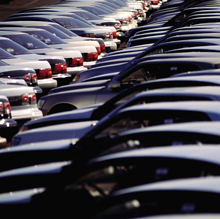Field:
Cars in China
– market, production and policy
- In 2009, China will probably become the largest car producer and market in the world. In 2008, China surpassed the U.S. in terms of the number of cars manufactured and is expected to shortly surpass Japan, which has been the world leader to-date. The U.S., which had thus far been the largest market in terms of the number of cars sold, was surpassed for that first time in the first quarter of 2009.
- China’s car production and market have always been surrounded by extensive political interest and involvement. Early on, the government pointed out the auto industry as a priority “pillar industry” that should function as the engine of China’s overall industrialisation.
- China has a large number of small and financially weak carmakers. Consequently, China’s government encourages the country’s carmakers to merge to be able to meet the competition from foreign producers.
- China has its sights set on becoming the world’s largest exporter of vehicles. Vehicle exports already exceed imports by volume. At the same time, imports have a higher value than exports. The unit value of exported vehicles is considerably lower than the value of the vehicles bought from other countries.
- At present, the largest problem for Chinese export success is insufficient quality, particularly with regard to safety aspects. There are also problems with regard to innovative capacity in the Chinese auto industry, as well as Chinese society in general.
- Since China joined the WTO, it has been forced to partially deregulate the auto and vehicle sector. Many non-tariff trade barriers related to joint ventures and own standards remain, however. Foreign carmakers perceive the requirement to enter joint ventures as particularly problematic since they thereby relinquish some control to a competitor.
- In the wake of the financial crisis, stimulation packages were prepared for 13 “key industries”. One of these covers the vehicle industry. Besides export discounts, grants for R&D, etc., a radical restructuring of the industry is planned. The largest Chinese carmakers will also receive pure subsidies.
- China is making a strategic investment in the environment and hopes to belong to the world’s leading producers of electric and hybrid cars within three years. The aim is to go from 2,000 manufactured electric and hybrid cars to half a million over the period 2008 to 2011. Significant resources are also being devoted to research on alternative fuels.
- Swedish carmakers will continue to be unable to compete with Chinese manufacturers on price. Instead, how well they succeed in developing core areas such as safety, design, environment and quality will be crucial. Today, China is mainly making stakes on basic, inexpensive environmentally friendly cars. However, on the long term, China will want to enter more expensive market segments.

Cars in China – market, production and policy
Serial number: Report 2009:13

